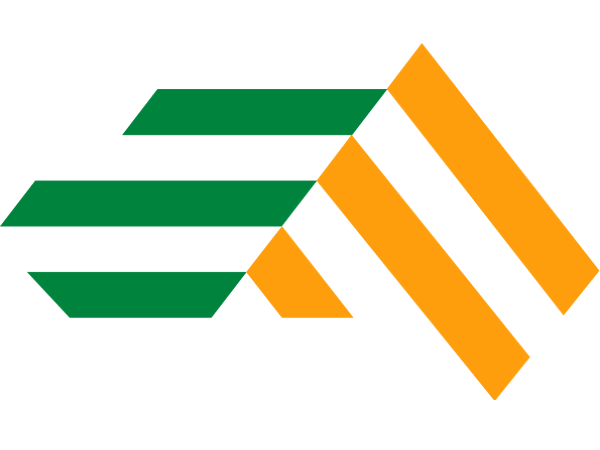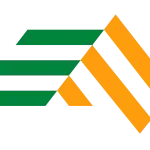Inkjet printers are a popular option for home and business users who need excellent printouts for documents, photographs, or other types of printing. As they gain popularity and are used more often, many people wonder how inkjet printers work.
The inkjet printer creates images by pressing ink onto paper. The printer propels liquid ink droplets through a print head onto the paper. The ink dots are too small, usually between 50 and 60 microns. The printing method allows for a variety of colors and tones, making it ideal for printing graphics and photos. The dots are precisely positioned on the page to achieve a resolution of 1440×720 dots per inch.
The best inkjet printers are more efficient than other printers and require less maintenance. The ink is also more cost-effective than different types of printer ink, making them an excellent option for those on a budget. The good-quality ink cartridges for inkjet printers are available for under $25 with a yield of approx 200 to 250 pages.
How Do Inkjet Printers Work
An inkjet printer works by propelling droplets of ink onto paper. There are two main technologies that most inkjet printers use: bubble jet technology, which involves heat, and piezoelectric technology, which involves vibrating crystals.
Two Main Inkjet Technologies
Thermal Bubble Inkjet Technology
The technology works by heating a small chamber of ink until it vaporizes, creating bubbles that rise to the surface. As the ink bubbles reach the top of the chamber, a tiny nozzle directs the ink onto paper, creating an image. This technology allows for precise control of ink droplet size and placement, allowing for accurate and detailed prints. The bubble jet print head has the capacity to release 300 to 600 direct droplets through tiny nozzles. You can find printers from Canon and Hewlett-Packard based on this technology.
Piezoelectric Inkjet technology
Piezoelectric inkjet printing technology is a reliable and efficient way to create printed materials. It works by vibrating tiny piezo crystals inward when they receive a tiny electric charge. The crystals eject a small amount of ink onto the substrate, creating the desired output. When the crystal is vibrated outwards, it pulls more ink from the reservoir. This technology is mostly found in Epson printers.
How Do Inkjet Printers Work: Step-by-Step Process?
- When the print command is clicked with an inkjet printer, the print job is sent to the printer.
- The printer will then prepare itself for printing. This includes loading any paper that is necessary and warming up the ink cartridges.
- When the printer is idle, it will run a short clean cycle to ensure that the print head is clean.
- If the job is a color print, the printer will automatically calibrate the colors to ensure a perfect print.
- Once it is ready, the printer will begin printing the document. Depending on the complexity of the document, the printing speed can vary. Like, a printer can have a printing speed of 19 pages per minute for black and white prints, whereas for colored print out it may produce 1 print per minute.
- After the printing job is complete, the printer will eject the paper and go into standby mode.
- The user can then remove the printed document from the output tray and proceed with their task.
What are the Basic Working Parts of an Inkjet Printer?
Print Head Assembly:
Print Head: The print head forces the ink onto the paper by using a series of nozzles, which are activated when the printer is in use. It is composed of two separate parts, the ink reservoir and the print head itself. The ink reservoir holds the ink that is necessary for printing and the print head is responsible for controlling the flow of ink onto the paper.
Ink Cartridges: Ink cartridges are responsible for supplying the ink needed for printing. They are typically made of plastic and contain a variety of colored inks. The cartridges are inserted into the printer and must be replaced when they run out of ink.
Print Head Stepper Motor: The stepper motor controls the back-and-forth movement of the print head. It is a small motor that is connected to the print head and controls its movement.
Stabilizer Bar & Belt: The stabilizer bar helps in providing a stable platform for the print head to rest on. It connects to the stepper motor which allows the print head to remain steady while it is in use.
The belt offers a smooth surface for the print head to move across. It has a construction of rubber or plastic. It allows the print head to move smoothly from side to side and up and down.
Paper Feed Assembly:
Paper Tray/Feeder: The paper tray or feeder is the part of the printer that holds and supplies the paper to the printer for printing. It is generally located at the top or bottom of the printer and is adjustable to accommodate various sizes of paper. You should make sure the paper is correctly loaded and that the feeder is adjusted according to the paper size in order to avoid jams or other printing issues.
Rollers: The rollers are the components of the printer that move the paper through the printing process. They are inside the printer and are made of rubber or other materials that can grip the paper and move it through the printer.
Paper Feed Stepper Motor: The paper feed stepper motor controls the speed and direction of the paper as it moves through the printer. It is responsible for accurately maintaining the speed of the paper so that it can be printed properly.
Power Supply: The power supply provides the necessary power to the printer in order to operate the various components including the rollers, paper feed stepper motor, and control circuitry.
Control Circuitry: The control circuitry sends signals to the various components to ensure that the printer functions properly. It also decodes the information that comes from the computer.
Interface Ports: The interface ports connect the printer to other devices such as a computer or other external devices. Parallel ports are common in most printers, but in the new models, you can also find USB ports or SCSI ports. The wireless inkjet printers support wireless connectivity. You can also look for models like Canon Pixma TR150 that support wireless mobile printing through Airprint and cloud support.
Inkjet Printer Uses
Inkjet printers are a useful addition to your home office space or your study setup. You can also use inkjet printers to boost your creative skills. The uses of inkjet printers are as follows:
- Printing documents and images with high quality and accuracy
- Creating personalized items like mugs, t-shirts, and mousepads
- Producing high-resolution photos for professional and personal use
- Making customized labels and stickers for business or personal use
- Printing 3D objects using specialized inks and materials
- Producing banners and posters with bright colors and sharp details
- Printing on specialty materials like canvas, and fabric
- Creating artwork and graphics for use in advertising and marketing
Conclusion
Inkjet printers are not only easy to use, but also provide a variety of helpful features for users. Knowing how inkjet printers work can provide you with a better understanding of the features and how to make use of them. Some common features of inkjet printers are Wi-Fi and USB connectivity, and the auto-duplex print feature.
Inkjet printers are now an essential part of everyday life and can provide users with a reliable way to print documents and photos quickly and easily. With some basic knowledge, users can take advantage of the features offered by their inkjet printer and enjoy the convenience and dependability that it provides. The inkjet Bluetooth printers also feature Bluetooth connectivity to offer more convenience.
AESA helps you find the best-selling inkjet printers on the market by rating and reviewing them on the basis of quality, convenience, and durability. Get unbiased, honest reviews of products before you buy.





